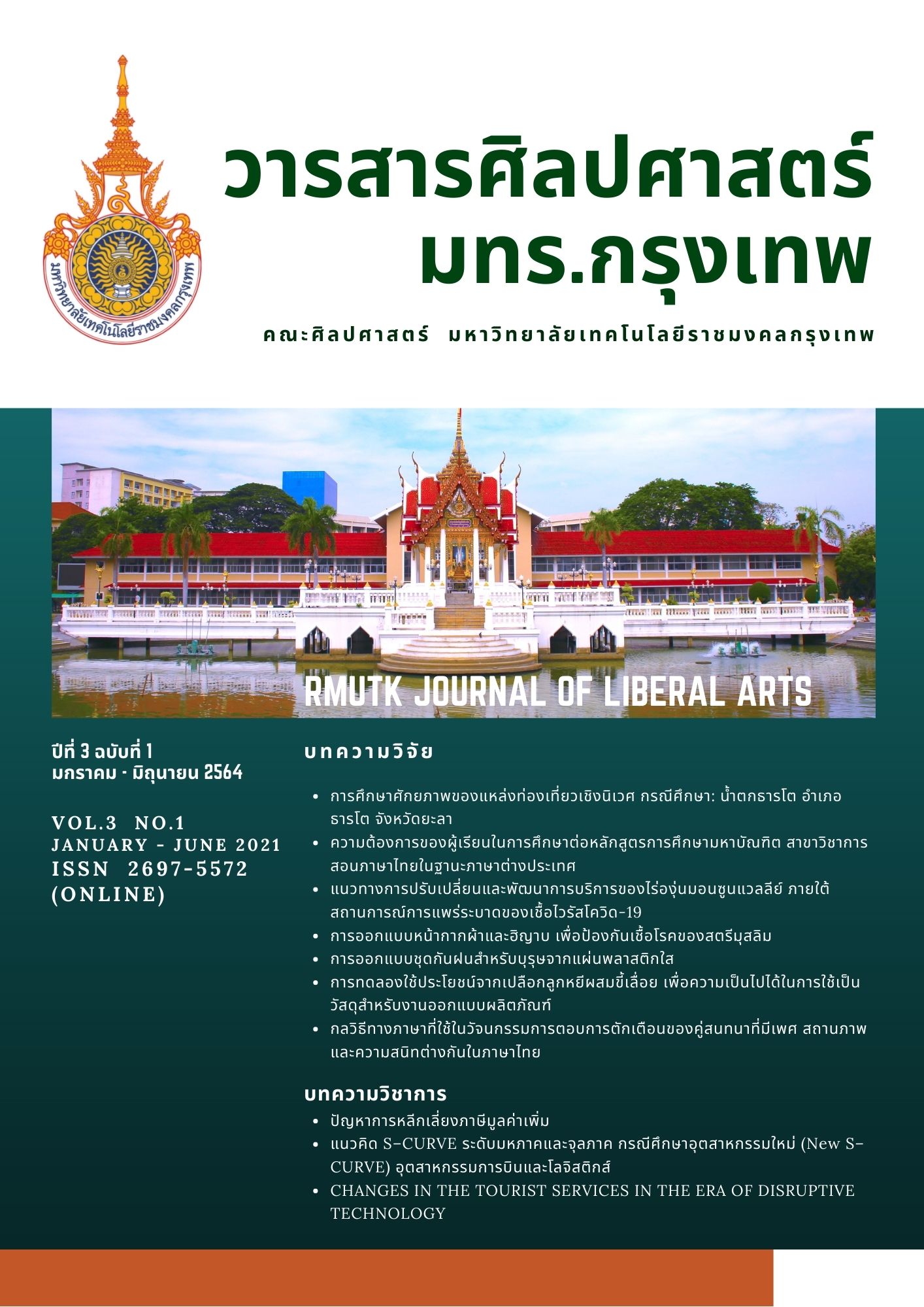PROBLEMS OF TAX EVASION IN VALUE ADDED TAXES
Main Article Content
Abstract
This article focused on the problems of tax evasion in value added taxes compared with the tax laws of the United Kingdom, in order to find appropriate legal and administrative solutions in all kinds of tax evasion in value added taxes cases. The analysis report showed the problems of tax evasion in value added taxes in three practices which are 1) Failure to register in the value added taxes system, 2) Value added taxes collected but not remitted to the tax authority and 3) Selling goods and services with multiple transactions. In the United Kingdom, the solutions applied for solving these problems are 1. To clearly and precisely determine status of traders in value added taxes system, 2. To use the system forcing the buyer, as a duty, to remit the VAT instead of the seller or "Reverse Charging", and 3. To determine Joint and Several Liability. According to the study, the tax evasion in value added taxes cases can be reduced by following those guidelines. Therefore, it is necessary for Thailand to clearly define and add duty to those who is responsible for tax remittance including the online commercial business. Buyers are responsible to pay tax, instead of sellers in some kinds of business that are at risk of value added tax evasion. Moreover, adding the penalty of fine rate under the Revenue Code, Section 89 is also important. And the persons in any part of the same production line or a joint sale or purchase transaction should be aware of and responsible for the penalty of tax evasion in value added taxes together.
Article Details
References
กรมสรรพากร. (ม.ป.ป.). การปรับปรุงวิธีการจัดสรรรายได้ประเภทภาษีเพิ่มให้แก่องค์การบริหารส่วนจังหวัดให้เกิดความเป็นธรรม โดยการใช้ข้อมูลจัดทำรายงานภาษีซื้อและภาษีขายของภาษีมูลค่าเพิ่มด้วยระบบอิเล็กทรอนิกส์ และให้ภาคประชาชนมีส่วนร่วมในการจัดสรร. กรุงเทพฯ: กระทรวงการคลัง.
กรมสรรพากร. (ม.ป.ป.). ภาษีมูลค่าเพิ่ม. สืบค้นจาก https://www.rd.go.th/27864.html
กรมสรรพากร. (2543). รวมกฏหมายภาษี. สืบค้นจาก https://www.rd.go.th/23962.html
คำสั่งกรมสรรพากร. (2542). สืบค้นจาก https://home.kku.ac.th/anuton/electronic%20tax/3361.0.html
คำสั่งกรมสรรพากร ที่ ป. 86/2542. (2542). สืบค้นจาก https://home.kku.ac.th/anuton/electronic%20tax/3568.0.html
ชัยสิทธิ์ ตราชูธรรม. (2559). คำสอนวิชากฎหมายภาษีอากร. (พิมพ์ครั้งที่ 11). กรุงเทพฯ: กรุงสยาม พับลิชชิ่ง.
โทษของการหลีกเลี่ยงภาษี. (ม.ป.ป.). สืบค้นจาก https://www.pattanakit.net/index.php?lay=show&ac=article&Id=538700607&Ntype=134
บดินทร์ มหาวงศ์ และไพบูลย์ ผจงวงศ์. (2562). ความสัมพันธ์ระหว่างผลการดำ เนินงานและการหลบหลีกภาษีเงินได้นิติบุคคล ของบริษัทจดทะเบียนในตลาดหลักทรัพย์แห่งประเทศไทยในกลุ่ม SET 100 Index. วารสารเกษตรศาสตร์ธุรกิจประยุกต์, 13(18), 15-40.
ภาษีธุรกิจเฉพาะ. (ม.ป.ป.). สืบค้นจาก http://www.thailaws.com/aboutthailaw/general_23.htm
ภาษีมูลค่าเพิ่ม. (ม.ป.ป.). สืบค้นจาก https://thailawonline.com/th/business/tax-law/value-added-tax-vat.html
วราพร เศรษฐธนารักษ์. (2564). การกระทำความผิด ตามมาตรา 37 แห่งประมวลรัษฎากร. สืบค้นจาก https://www.dharmniti.co.th/special-offense37/
วารัชนี หลงสกุล. (2550). การวิเคราะห์การหลีกเลี่ยงภาษีอาการของประชาชน ศึกษาเฉพาะกรณีสำนักงานสรรพากรพื้นที่สาขาบางรัก 3 (สารนิพนธ์ปริญญารัฐประศาสนศาสตร์มหาบัณฑิต). มหาวิทยาลัยศรีนครินทรวิโรฒ, กรุงเทพฯ
Government Digital Service. (2014). Guidance VAT guide (VAT Notice 700) The guide to VAT rules and procedures. Retrieved from https://www.gov.uk/guidance/vat-guide-notice-700
Smith, A., & Cannan, E. (2003). The wealth of nations. New York, N.Y: Bantam Classic.


